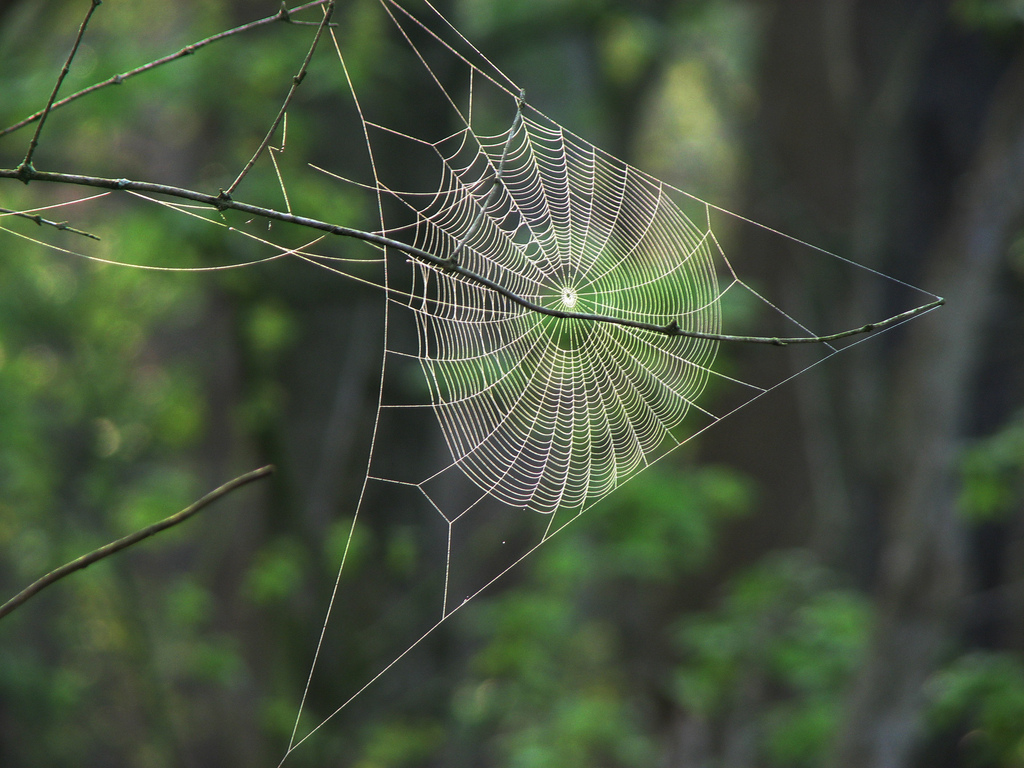Museum Planning and Project Management
“One cannot hope to have a building that corresponds to the philosophic aspirations of the museum leadership without first divining the strategy directions of the museum and translating those into binding architectural terms...In this regard, it does not matter if we are talking about new building, refurbishment of existing structures, or even just rearrangement of the current fit-out. My advice to my many clients is that the architectural program plan is the most critical element in the building process.”
Elaine Gurian, "Threshold Fear".
The spider web is an apt image of our strategy, planning and project management work with museums. The spider begins by defining a frame for her web. For a museum the anchor points are its mission, its leadership, and the support of its community. With her frame in place, the spider then lays a scaffold of radial threads from the center to the frame. For the museum this is the planning phase when we work with staff, stakeholders and communities to create the skeletal system of the project. Then, like the spider that spirals out from the center to connect the radial threads with a non-stick thread, our design teams weave these diverse perspectives and needs into designs for new experiences and spaces. When the design is complete, builders retrace our steps laying down a strong, sticky thread to anchor the plan in place. But the process of renewal is constant. Even after construction, we continue to work like spiders, on call to assist as our clients adapt, repair and rebuild their webs to meet community needs.
THE AMERICAN CIVIL WAR MUSEUM
Richmond, Virginia
In November 2013, The Museum of the Confederacy (MOC) and The American Civil War Center(ACWC) consolidated their operations to create a new organization, The American Civil War Museum (ACWM). The new institution would combine the former MOC's unrivaled collection of Civil War artifacts and scholarship with the ACWC's compelling public programs and spectacular location on the James River at the site of the largest Confederate iron works to become "the preeminent center for the exploration of the American Civil War and its legacies from multiple perspectives".
Our work for the ACWM began with architectural programming for a new museum building. Next we assisted staff in developing an interpretive plan that addressed audiences, impact, visitor experiences and interpretive themes. We are currently working on exhibition planning and project management for the entire site. When completed, the ACWM will offer an immersive theater experience, opportunities to learn about the Civil War from the perspectives of people who lived through it, greater access to the museum's collections and site specific exhibits that explain the role of water power and the industrial ruins on the site.
Black history museum and cultural center of virginia
Richmond, Virginia
Built in the 1890’s to house an African American military battalion, the First Battalion Virginia Volunteers Armory was one of six original armories in the city. It is the oldest African American armory in Virginia and quite possibly in the United States. After emancipation, blacks were eager to serve in citizen militia and exercise the right to bear arms. For Richmond’s black community, the Leigh Street Armory’s brick and granite represented a solid step toward achieving the American dream after centuries of struggle. Change came quickly when the black militia company who used the armory was disbanded in 1899 and in the same year, the building was turned over to the Richmond School Board to be used as a “school for colored children”. The building served as an elementary school for the next 40 years. During World War II it was adapted for use as a reception center for servicemen of color. After the war, the armory was used as as a school building, a gymnasium and eventually for school storage. In 1981 when the City declared the armory “surplus property”, the newly formed Black History Museum hoped to renovate the building, but was unable to raise the necessary funds. After a fire in the mid-1980s the armory stood padlocked and dark until 2002, when a “Save America’s Treasures” grant paid for the stabilization of the building. Again the building sat empty until 2012 when the Black History Museum and Cultural Center of Virginia acquired the building from the school board and began planning for an ambitious renovation of its new home.
We assisted in the initial planning phases for the new museum; outlining the steps forward and assisting in the development of a strategic plan. Through conversations with stakeholders and community members, the museum redefined its mission (to tell the African-American story for a broad audience) and its vision for the future:
• The Armory is a thriving, central gathering place: welcoming, accessible, collaborative, innovative, relevant and dynamic.
• We develop and deliver extraordinary experiences that bring people together around African-American history and culture
• We provide a safe place for dialogue about identity, race, ethnicity, economic class and the nature of freedom.
MUSEUM OF THE CONFEDERACY
Appomattox, Virginia
The responsibilities and scope of a construction project are well defined and defended, but transforming a museum is a step into the unknown, a complex and arduous evolution with no fixed time frame that affects every member of the museum community. This project began with the proposal to create a "museum system" that in turn required a revised strategic plan, audience research, financial feasibility studies and an interpretive plan for the new "museum system".




